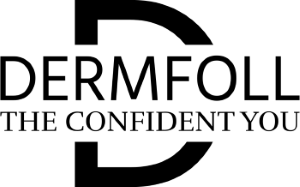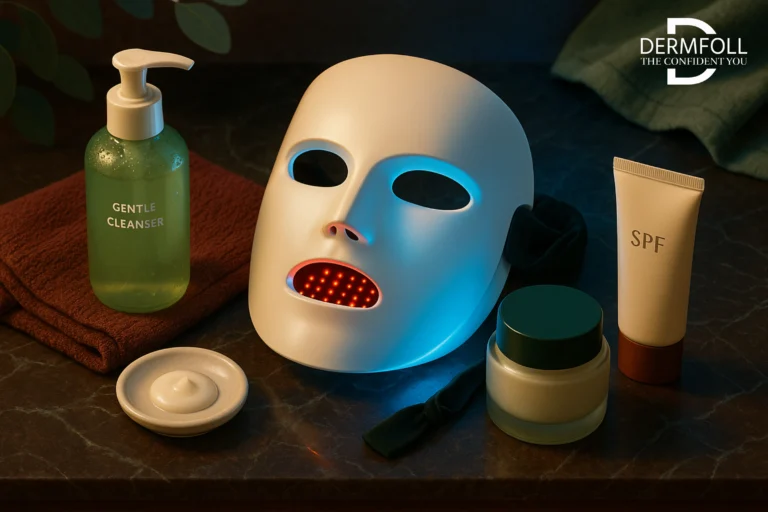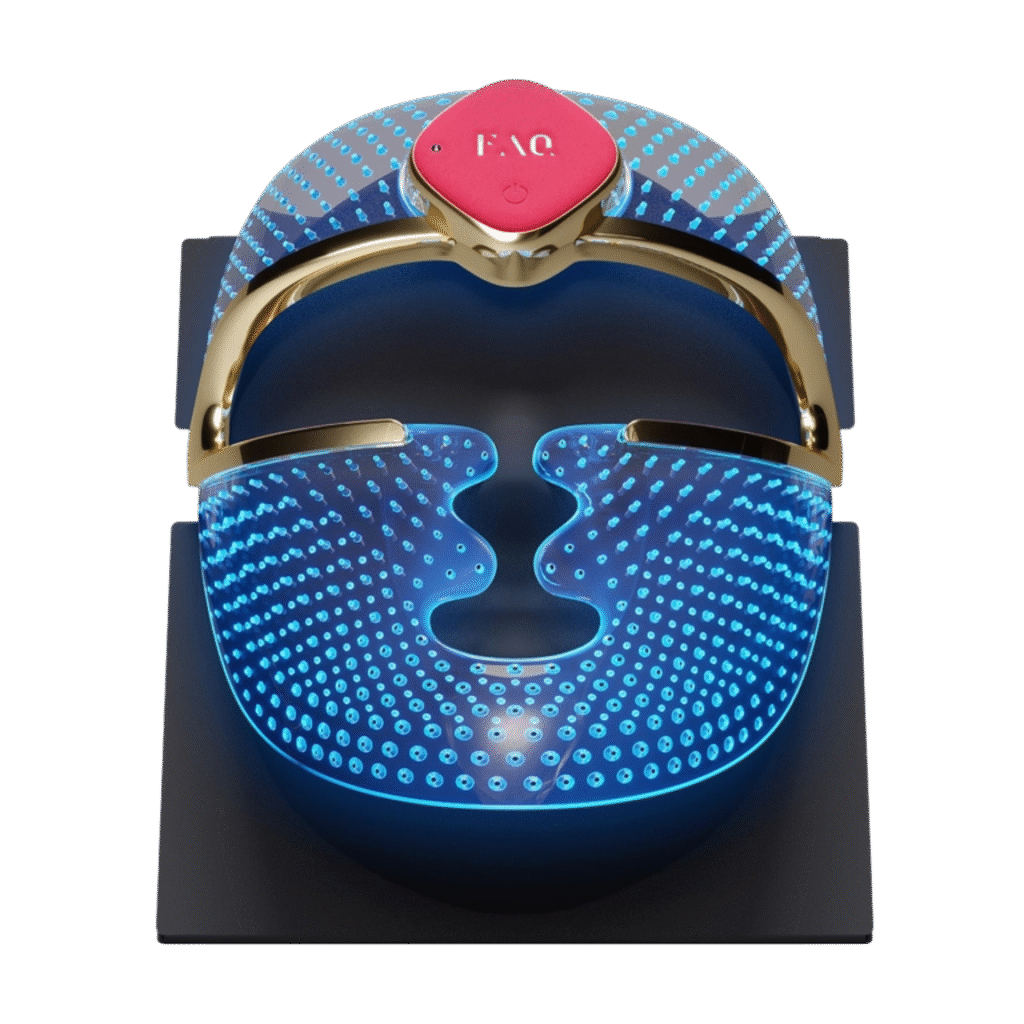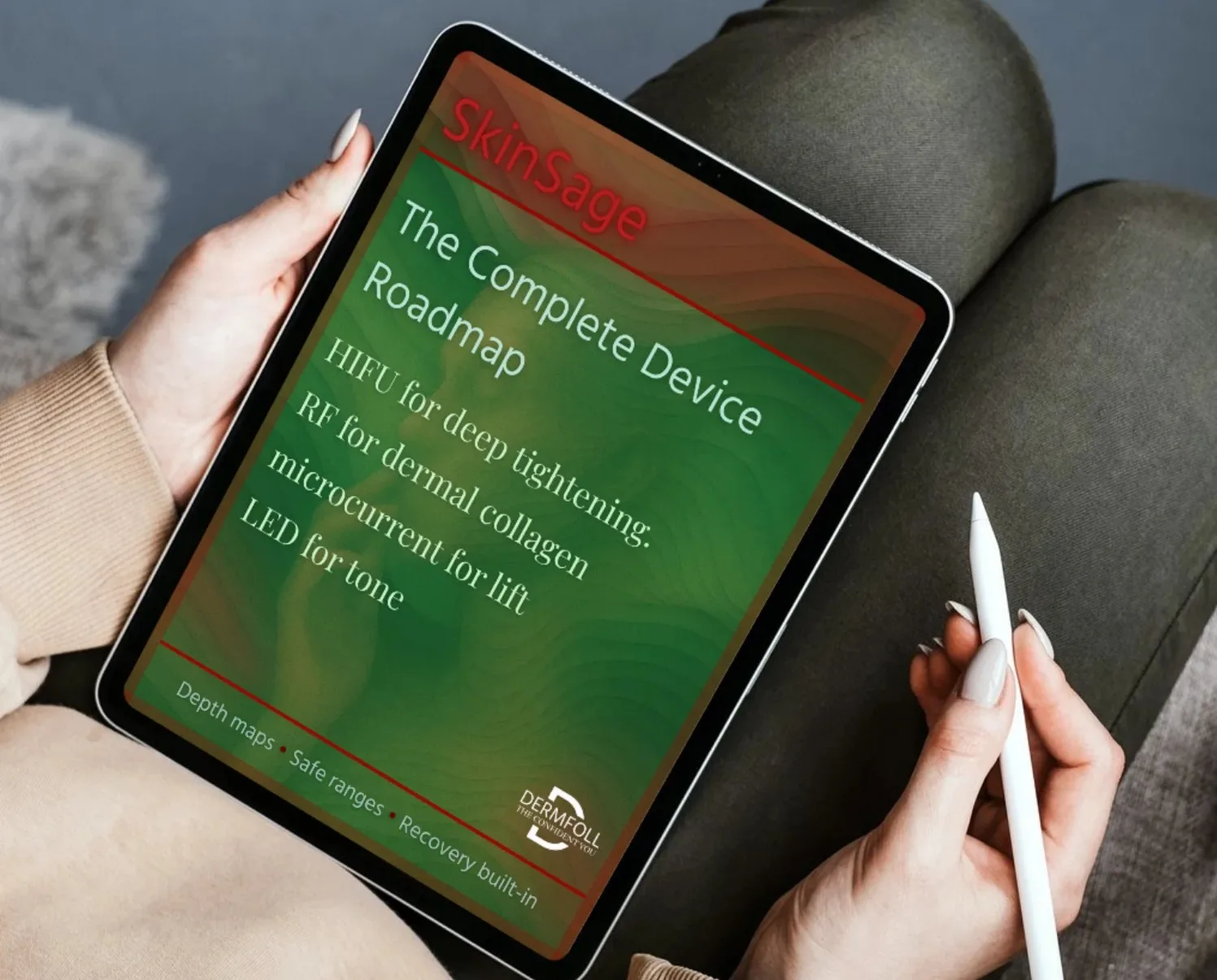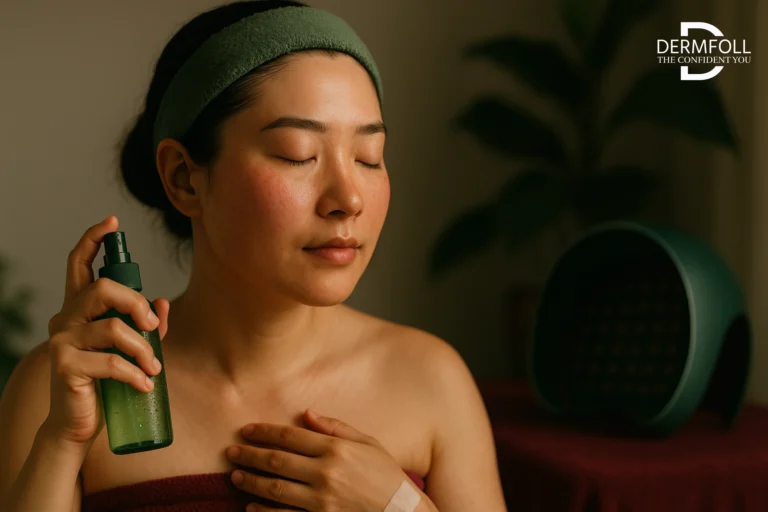Blue LED Light Face Therapy: Targeting Acne with Precision Light
Acne must feel like a never-ending fight. Trying every product possible, changing up your skin care approach, yet you still get breakouts.
Blue LED light therapy can work really well here, especially when creams and spot treatments don’t work as quick or as effectively.
If you’ve heard of blue LED lights for face treatments and are asking, “How does this stuff work?” you’re in the correct place.
Let’s go through it step by step.
Light as an Antibacterial Tool – From NASA to Acne Therapy
Let’s rewind for a second.
Back in the 1980s, NASA started exploring the effects of light on wound healing in space.
That research kicked off an entire field called photobiomodulation, which is just a fancy way of saying “using light to help your cells do better.”
From there, scientists realized: if specific light wavelengths can help with wound healing, could they also target acne-causing bacteria?
“The therapeutic roots of LED light therapy began with NASA’s studies on cellular regeneration, eventually leading to its dermatological use in treating acne without antibiotics.” — Photodynamic and Photobiological Effects of LED, p.2
And that’s how blue LED lights for face care made their clinical debut—as a legit, non-drug solution to breakouts.
🔶 Check out our top picks for supporting post‐procedure healing without irritation
SEAYEO Pro LED Light Facial Beauty Device | FOREO FAQ™ 201 Anti-Aging Silicone LED Mask
The Science Behind Why Blue Light Is Different- How It Doesn’t Go Deep
The blue wavelength, somewhere between 415 to 470 nanometers, doesn’t dive deep like red or infrared light.
Instead, it hovers right at the surface – just enough to interact with the epidermis, which is where acne bacteria like to hang out.
“Blue light is absorbed by porphyrins in the upper layers of skin, leading to targeted bacterial destruction without affecting the deeper dermis.” — Low Level Light Therapy,
So if your skin’s been feeling reactive or sensitive, this shallow penetration is actually a huge plus.
You’re targeting the acne without stirring up deeper tissues or causing unnecessary irritation.
Porphyrins, Bacteria, and Light – A Molecular Chain Reaction
Inside your clogged pores, there’s a bacteria called Cutibacterium acnes (you might know it as C. acnes).
This bacteria produces molecules called porphyrins, and when blue LED lights for face treatments shine on them, it sets off a chain reaction.
The light hits the porphyrins → they react → they produce reactive oxygen species (ROS) → and those ROS? They kill the bacteria.
“Exposure to blue light initiates a photochemical response in porphyrins, producing reactive oxygen species that destroy C. acnes without harming the surrounding skin.” — Photodynamic and Photobiological Effects of LED,
And here’s the best part: this whole process is super targeted. You’re not nuking your whole skin barrier – just the troublemakers.
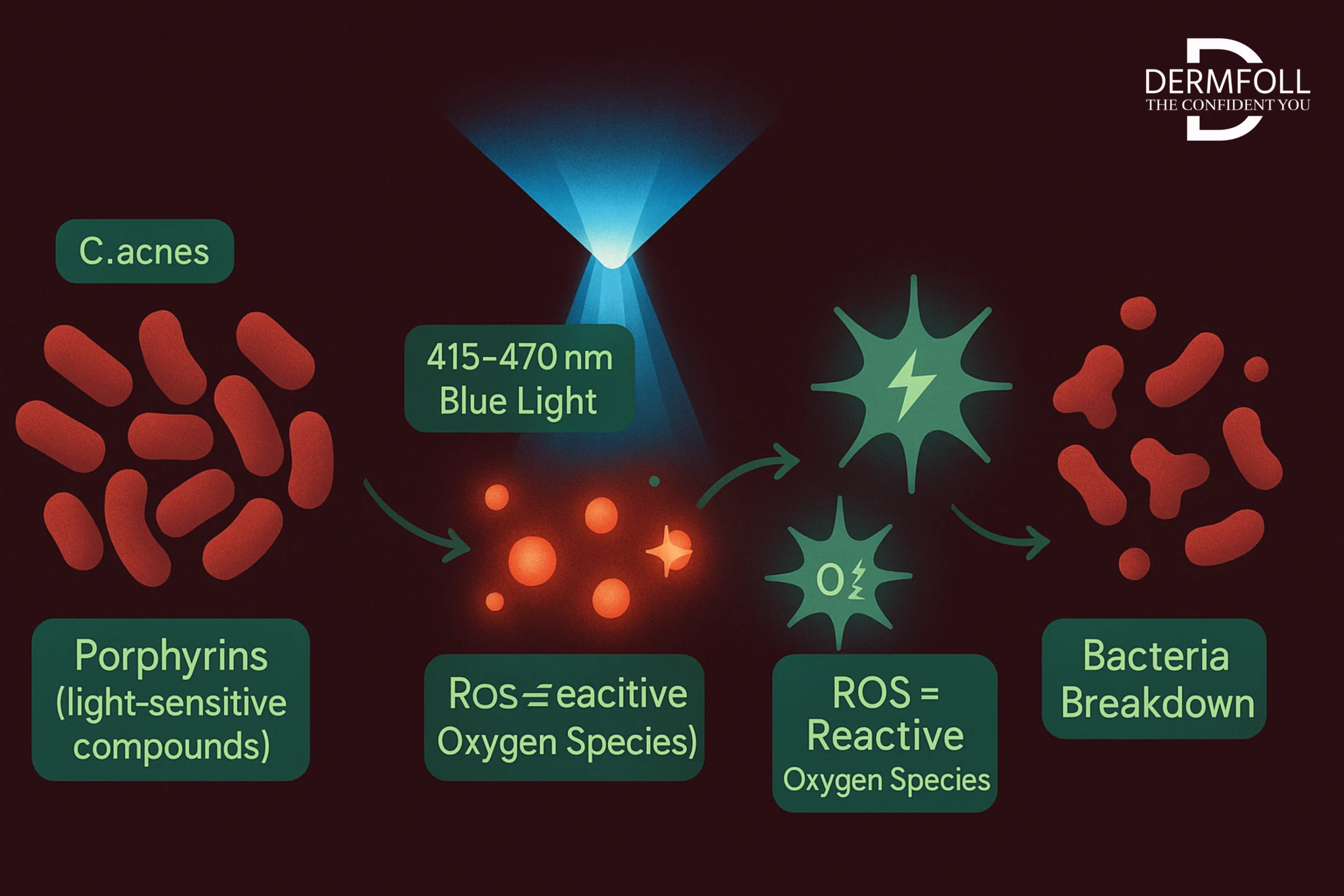
Safety in the Shallows – Why Blue Light Is Ideal for Acne-Prone, Oily, or Reactive Skin
Now, I get it, you might be thinking, “Is this actually safe for daily use?”
Yes, because blue LED light face treatments stay close to the skin’s surface, they don’t disrupt your skin barrier the way some stronger treatments can.
That makes them especially well-suited for acne-prone, oily, or even sensitive skin types.
“Due to its limited penetration and precise wavelength, blue light minimizes skin disruption, making it safe for regular use in acne treatment.” — LED Light in Epidermis Hyperpigmentation
Of course, like any device, you’ll want to use the right intensity and protect your eyes (those lights can be intense).
But overall? It’s one of the gentler options out there with a strong safety record.
🔶 Halfway through recovery? These gentle heroes have you covered
SEAYEO Pro LED Light Facial Device — wraparound red (630–660 nm), low-fluence design for 24–48 hr post-treatment calm
FOREO FAQ™ 201 Anti-Aging Silicone LED Mask — flexible bandage fit, yellow & infrared modes for sensitivity repair
Why Blue Light Works for Sebum: The Science Behind the Clearer Skin
You’ve probably seen those glowing masks or handheld devices claiming to “zap zits” with light, and maybe thought, “Is this just another gimmick?” Totally fair.
But the science behind blue LED light therapy is actually solid. It’s grounded in decades of research, starting from some pretty unexpected places.
Regulating Sebum and Skin Behavior – Beyond Bacteria
Blue LED light face treatments don’t just kill bacteria. They also help rebalance how your skin behaves.
You know that oily shine that just won’t quit? That’s sebum, an oily substance your skin makes. Blue light has shown to turn down sebum production.
The light interacts by signaling to the sebaceous glands to reduce activity. Plus, it reduces inflammation by calming overactive skin cells and the chemicals they release.
“Blue light influences both oil gland activity and inflammatory markers, helping control oiliness while reducing skin flare-ups.” — A Single-Blind, Dose Escalation Study
So it’s like a three-pronged approach: kill bacteria, lower oil, calm inflammation. No wonder it’s such a staple in acne care.
Why Blue Light Is Not UV – Understanding Safety and Selectivity
Now let’s clear up a huge misconception.
You might hear “light therapy” and immediately worry: “isn’t light bad for my skin?” Totally fair again. But here’s the deal – blue LED lights for face treatments are not the same as UV rays from the sun or tanning beds.
UV light is ionizing. That means it has enough energy to damage your DNA – which is why it’s linked to things like sunburn and skin cancer.
Blue light, on the other hand, is non-ionizing. It doesn’t mess with your DNA. And when used at the right intensity and dose, it’s very skin-friendly, especially when you avoid overexposure and wear eye protection.
“Unlike ultraviolet radiation, therapeutic blue light does not damage DNA or healthy skin structures, making it a safe and selective option for acne treatment.” — Blue Laser Treatment of Solar Lentigines
So you can breathe easy: this is not about frying your skin. It’s about guiding it gently back into balance.
What Blue Light Therapy Actually Does for Your Skin: Clinical Insight
You’ve probably heard that blue LED light face therapy helps with acne, but let’s break down how it works. And what the clinical science says when you look past the marketing gloss.
Looking into peer-reviewed evidence, human trials, and real-world skin results.
Acne Reduction – Clearing Inflammatory and Non-Inflammatory Lesions
There’s hard data behind the acne-clearing claims. In multiple clinical trials, blue light LED therapy has shown consistent, measurable reductions in both inflammatory acne (like papules and cysts) and non-inflammatory acne (such as comedones and whiteheads).
In one study, patients treated with a blue light LED device experienced a 64.6% reduction in inflammatory lesions after just 5 weeks of therapy.
Another randomized split-face trial using 415 nm blue light showed statistically significant improvements in acne severity, particularly when combined with red light .
Also, A self-luminous sheet mask embedded with 460 nm diodes reduced papules, pustules, and skin oil within 2 weeks – demonstrating that even lower-power at-home devices can achieve meaningful outcomes with proper engineering .
“LED-based treatments at 415 nm can safely reduce both the number and severity of lesions, especially when treatment is consistent and timed to avoid photosensitizers.” — Photobiological Effects of LED Study, 2020
Less Oil, Fewer Breakouts – How Blue Light Balances Sebum Without Stripping Skin
One common fear: won’t it dry my skin out? Actually, that’s the beauty of blue LED lights for face use, it doesn’t have to.
Research has shown that blue light can modulate sebaceous gland activity without triggering barrier disruption.
In the Korean trial mentioned earlier, oil production significantly declined after repeated exposures to 415–420 nm light, likely due to photobiomodulation effects on the keratinocytes and underlying sebocytes .
And in another early-phase study, blue light was shown to impact lipogenesis pathways (sebum producing pathways), not by destroying oil glands (like isotretinoin).
But by subtly slowing down the metabolic signals that tell your skin to overproduce oil .
That means fewer clogged pores, fewer breakouts, and a gentler long-term path to clearer skin.
Calmer Skin, Fewer Flares – How Blue Light Supports Recovery for Sensitive, Red, or Reactive Skin
Beyond just bacteria and oil, there’s inflammation – and blue light’s surprisingly good at calming that too.
Studies using 465–470 nm LED arrays found that pro-inflammatory cytokines like IL-1α and TNF-α were reduced after exposure. Showing that blue light can help tame post-acne inflammation and flare-ups .
There’s even emerging evidence for blue light’s role in easing rosacea and atopic dermatitis, especially when applied intermittently at low irradiance.
In vitro models suggest that controlled blue light exposure may downregulate mast cell activation – a key player in sensitive skin responses .
This is especially exciting if you’re someone whose acne isn’t just oily – but reactive. You know the kind: red, stinging, tender. Blue light offers a soothing, barrier-safe tool to get inflammation under control.
“Blue light doesn’t just treat acne—it alters the inflammatory microenvironment, which may explain reduced post-acne erythema and faster lesion resolution.” — Epidermal Inflammation Review, 2021
Blue light might be the shallowest of the LED wavelengths, but what it lacks in depth, it makes up for in precision.
It treats the surface where oil, bacteria, and inflammation all collide. And it does it gently, without wiping out your skin’s natural defenses.
🔶 Keep these recovery heroes in your toolkit
SEAYEO Pro LED Light Facial Beauty Device | FOREO FAQ™ 201 Anti-Aging Silicone LED Mask
Each device is engineered to soothe, calm inflammation, and support barrier restoration when your skin needs it most.
CONCLUSION
So, what have we uncovered?
Blue LED light face therapy, it’s a clinically approved, science-backed strategy to controlling acne at its source.
From decreasing bacteria and relaxing inflammation to rebalancing oil without stripping your skin, blue LED lights for face care give precision without punishment.
We also witnessed how shallow penetration makes it safe and effective for sensitive or breakout-prone skin, all while avoiding the hazards of UV or over-aggressive treatments.
If you’ve been battling with flare-ups, oiliness, or treatments that just don’t play nice with your skin, blue light could be the gentler, smarter option.
But here’s the big question: is it right for you? In our upcoming post, we’re looking deeper into who benefits most from blue light therapy – and when to consult with your derm first.
Let’s go personal in the next one.
